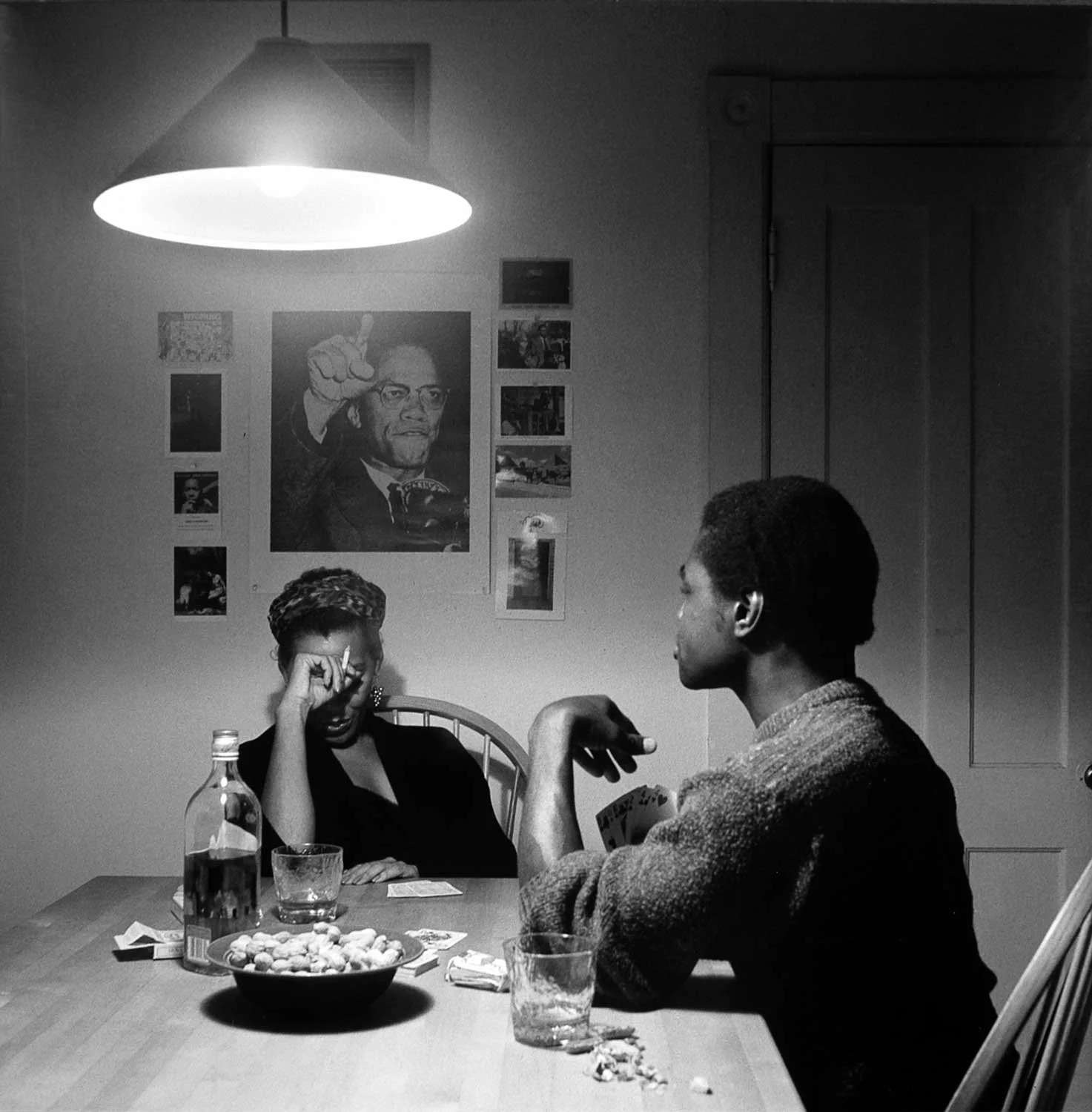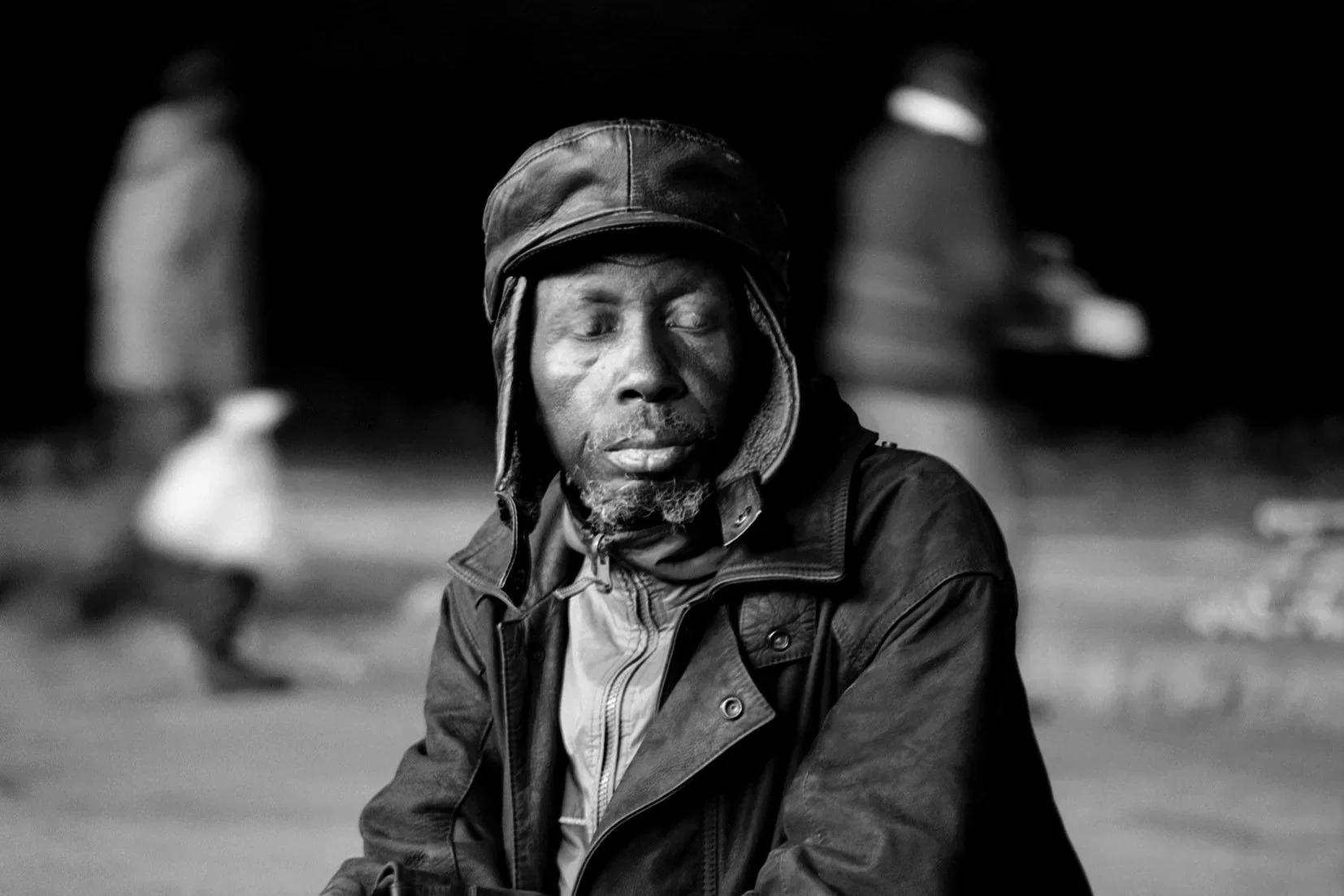LEBOHANG KGANYE
Carrie Mae Weems, Untitled (Playing Cards/Malcolm X) from the Kitchen Table II series, 1990 © Carrie Mae Weems, courtesy Jack Shainman Gallery.
Afterimages by Lebohang Kganye:
Santu Mofokeng’s photographs from the series Chasing Shadows and Black Photo Album/ Look At Me & Carrie Mae Weems’ images from Kitchen Table Series and Family Pictures are still on my mind. The influences and events that have changed the atmospheric pressure of my working space are oral histories, self-recollection and the recollection of others, autobiographical narratives, psychoanalytic theory and therapeutic practice dealing with transgenerational trauma, and the social and political climate of South Africa in the present, as well as its history, especially language and oral history. Naming and oral history is directly linked to the prohibition against black people learning to read and write in the context of apartheid. This attests to the power of literacy – voting was connected to the ability to read and write.
Santu Mofokeng, Eyes-wide-shut, Motouleng Cave, Clarens – Free State, 2004. Courtesy: the artist and Kunsthal Extra City, Antwerp
When asked about what comes after the pictorial turn, I’ve been thinking about ghosts – multitudinous manifestations and co-existences in a timespace between past and present – and Roland Barthes’s use of death as a metaphor for photography: the ‘presence of absent figures’ and an ‘always-already absent present’, which is ‘neither present, nor absent’. So for me, photography is a ghost, an existence in transition, hovering in a duality of time. By considering time as a construct, one can consider the ghost as a single being or as multiple possible presences, whether it is a spectre from the past, appearing in the present, or a spectre from the present, seeking refuge in the past.
From the final issue of Objektiv in 2020, marking its tenth anniversary. We gave twenty artists carte blanche to create portfolios or collage-like mind maps exploring the photography that inspires their practices. Each contribution was accompanied by a short statement.
Though not part of our Afterimage series, these contributions touch on themes of memory and perception. The artists were prompted with a set of inspirational questions, including one posed to W.J.T. Mitchell: What comes after the pictorial turn? He responded:
‘I think the study of the whole sensorium – the senses themselves, beyond vision, or as connected to vision – is one thing that follows logically after an emphasis on the visual. I never thought of images as silent; even silent movies were never silent: they had music and text.’

